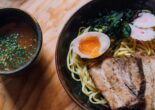If you want to do some cooking in Japan, you may be overwhelmed by all the gadgets in the kitchen. Each task has its specialized tool – that makes food taste much better. Most of them come from the hundred-yen-stores, and some you will quickly learn that you can not live without.
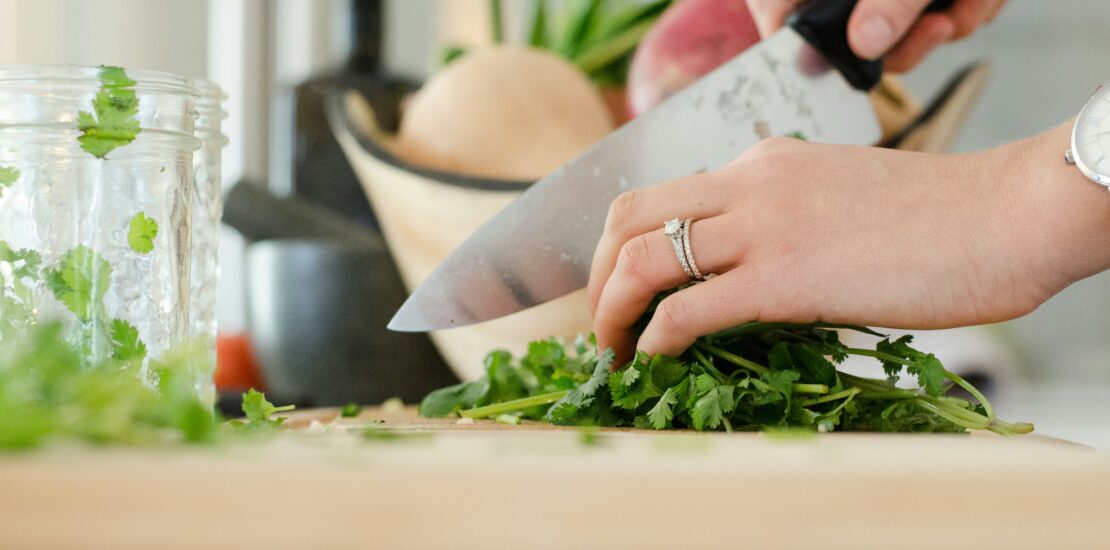
Japan is heaven for gadget lovers. To make clever things, the art and science of “monozukuri”, is one of the central tenets of Japanese culture.
But making one clever gadget does not add particularly much value to the world. As an inventor, want it to be found and used by as many people as possible. Preferably in an area where a simple tool can decrease stress by saving a few precious minutes. And the most obvious place to do that is the kitchen.
Japanese stores are filled to the brim with clever gadgets – “monozukuri”, the art of inventing and making clever things, is a cornerstone of the Japanese industry. And the stores where you will find most of them are the 100-yen stores.
100 yen to the rescue
Originally modeled on dollar stores in the US, where everything costs a dollar, the 100-yen stores are one of the biggest commercial successes in Japanese retail in many years. When they first opened, they were selling cheap Chinese imports knocking off Japanese products, but as the Japanese yen has become cheaper and cheaper, they have found ways to push down prices for domestically produced products. Always look at where the product was manufactured – usually if it is made in Japan, it proudly declares “Made in Japan” on the label. If the product is made in China, it will probably have the word China or 中国 somewhere on the label.
The price is no longer 100 yen, however. The sales tax is added on top of the price, lifting what you have to pay to 110 yen. Which still is cheap for what you get.
Made in Japan for sure
It is no exaggeration that products made in Japan have higher quality than products made in other countries, and the Japanese manufacturers build quality control into the product as a matter of course. But at least part of the explanation is that Japanese customers are extremely demanding. There are specialty stores for kitchen tools where a specially designed silicon-coated rice scoop will put you back 30000 yen. But no grain of rice will stick as you serve. However, if you are looking for specialized kitchen tools, the 100-yen stores provide a perfectly good alternative.
So always look for Japan-made kitchen goods, but this can be quite confusing in most 100-yen stores. Even if you can recognize where the product was made, you may have a hard time figuring out what it does.
No Daiso confusion
Except, that is, if you go to Daiso. While most of the 100-yen-store chains are strictly local, there are a few who creatively seek to expand. The Daiso group is at the forefront, with more than 2300 stores in the US, Australia, Brazil, Southeast Asia, China, and the Arab world.
There is a huge advantage to this: the products are internationalized – at least when it comes to the labels. Apart from the usual Japanese labels, Daiso products have text in English as a rule, and often in some of the other languages of the countries they serve as well. It makes it easy to understand if you are looking at an egg peeler or egg timer.
Part of the charm of shopping in Daiso and other 100-yen stores is the relentless pace of innovation. If a product does not sell, it goes off the shelves. Unfortunately, it means that products that were there during your last visit may be gone if you come back a few months later.
That said, if a product sells well, you can be sure it will stay on the store shelves for a pretty long time. And while some products are seasonal, others will be stocked all year round.
Use without batteries
Another advantage of finding out what products are available in the 100–yen stores is that there is no problem bringing them home. They do not require electricity, they do not need batteries, and they can as a rule be operated with one hand. They also make great souvenirs to bring home to continue that Japan feeling, or share it with others who were not able to come with you on the trip.
In addition, they will make the dishes coming out of your kitchen tastier. The religious attention to the ingredients and handling them well, without bruising or quashing, is central to Japanese cooking. And the kitchen tools you find in Japanese stores support this. Every task requires special tools, which is why you will find two different omelet turners in the stores – one for traditional Japanese omelets (tamagoyaki), and one for Western (round) omelets.
Ten unbeatable kitchen tools
So here are ten kitchen tools you will find in Japanese 100-yen-stores to help you in the kitchen. Use them for a while, and you will wonder how you could ever manage without them.
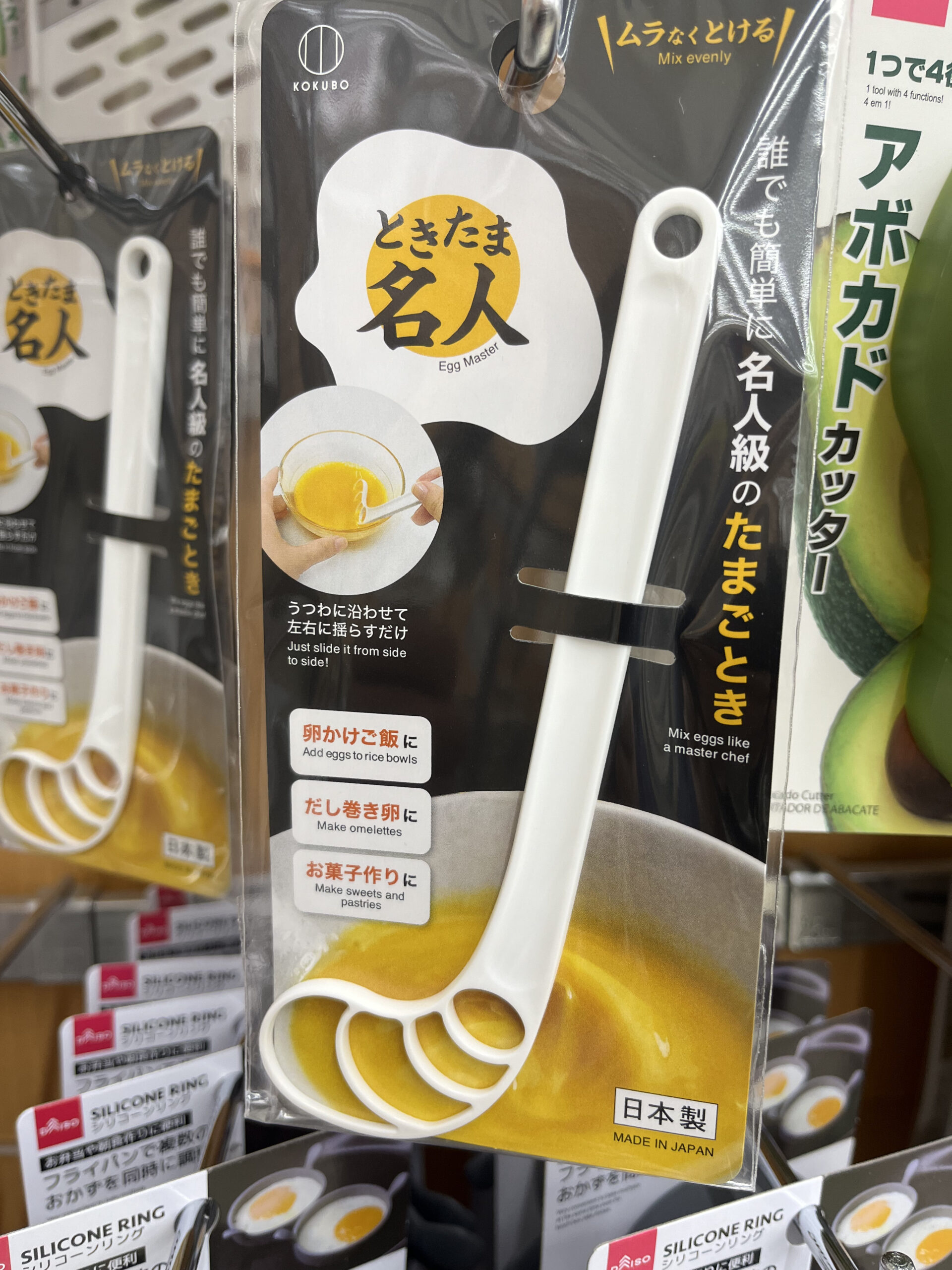
- Egg blender
It is not a whisk, it is a blender, designed to mix the yolk and white in preparation for putting on a bowl of rice or into hot miso soup, without letting air in. It looks like a small floorball stick, but the weird design is perfect for the purpose.
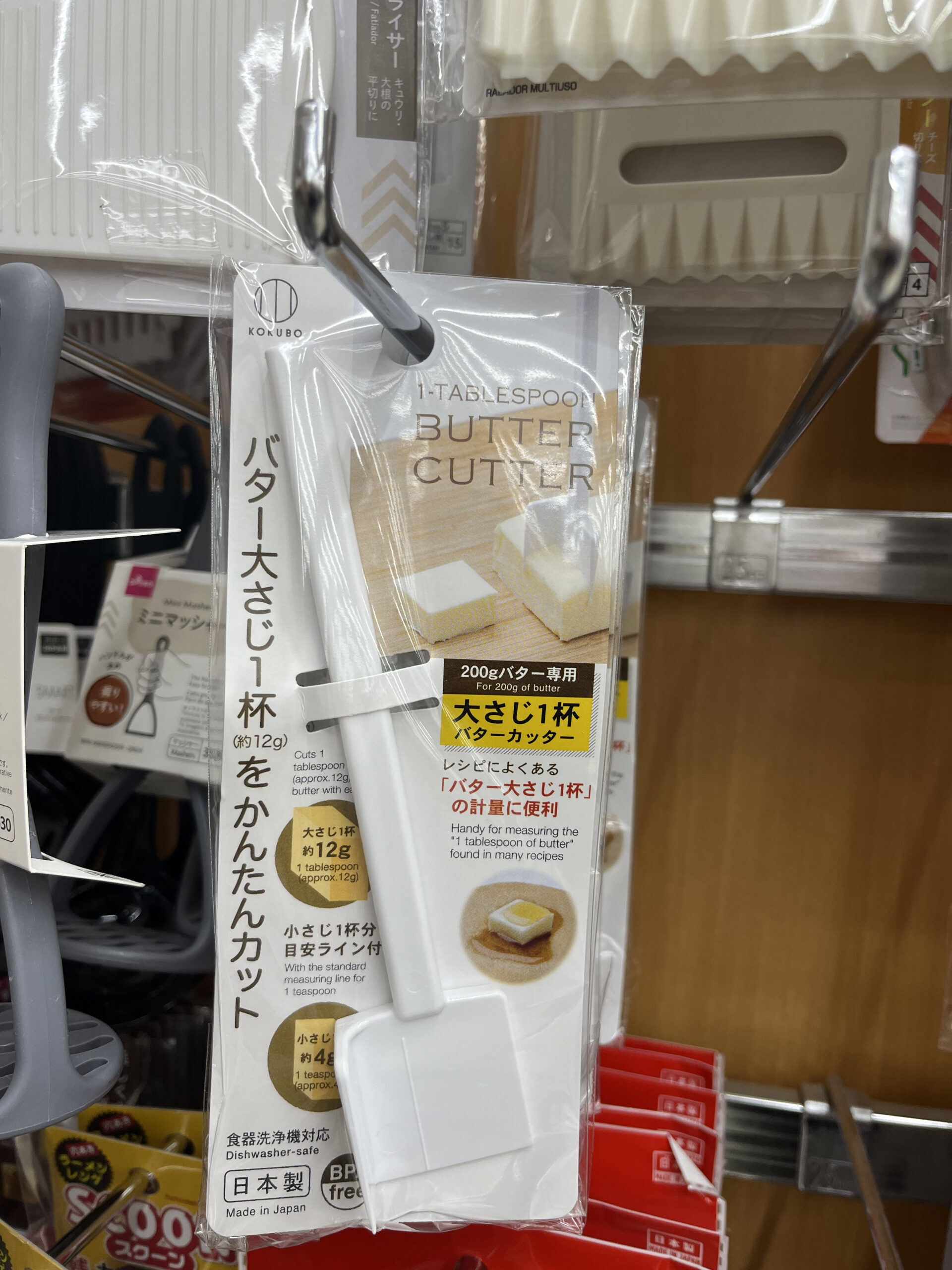
-
Butter cutter
You can cut butter with basically any sharp implement, but only the Daiso butter cutter will tell you exactly how much butter you are cutting.
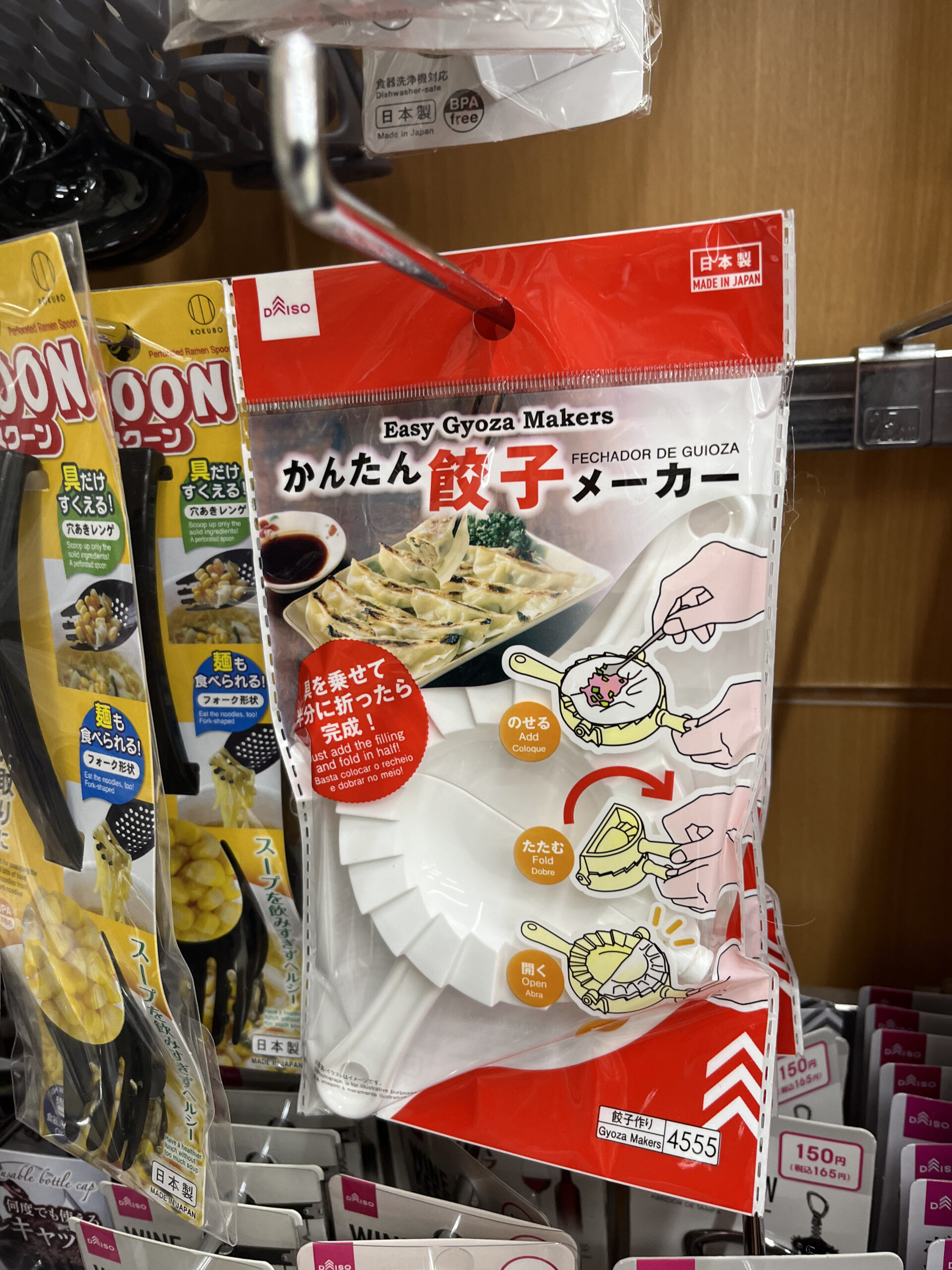
-
Gyoza maker
If you are in love with Japanese gyoza dumplings, but have the task of folding the dough on each one for all your guests, you may want to try the gyoza maker. It lets you fold and close the gyoza shell over the filling without spilling. And it works equally well for boiled and fried gyoza.
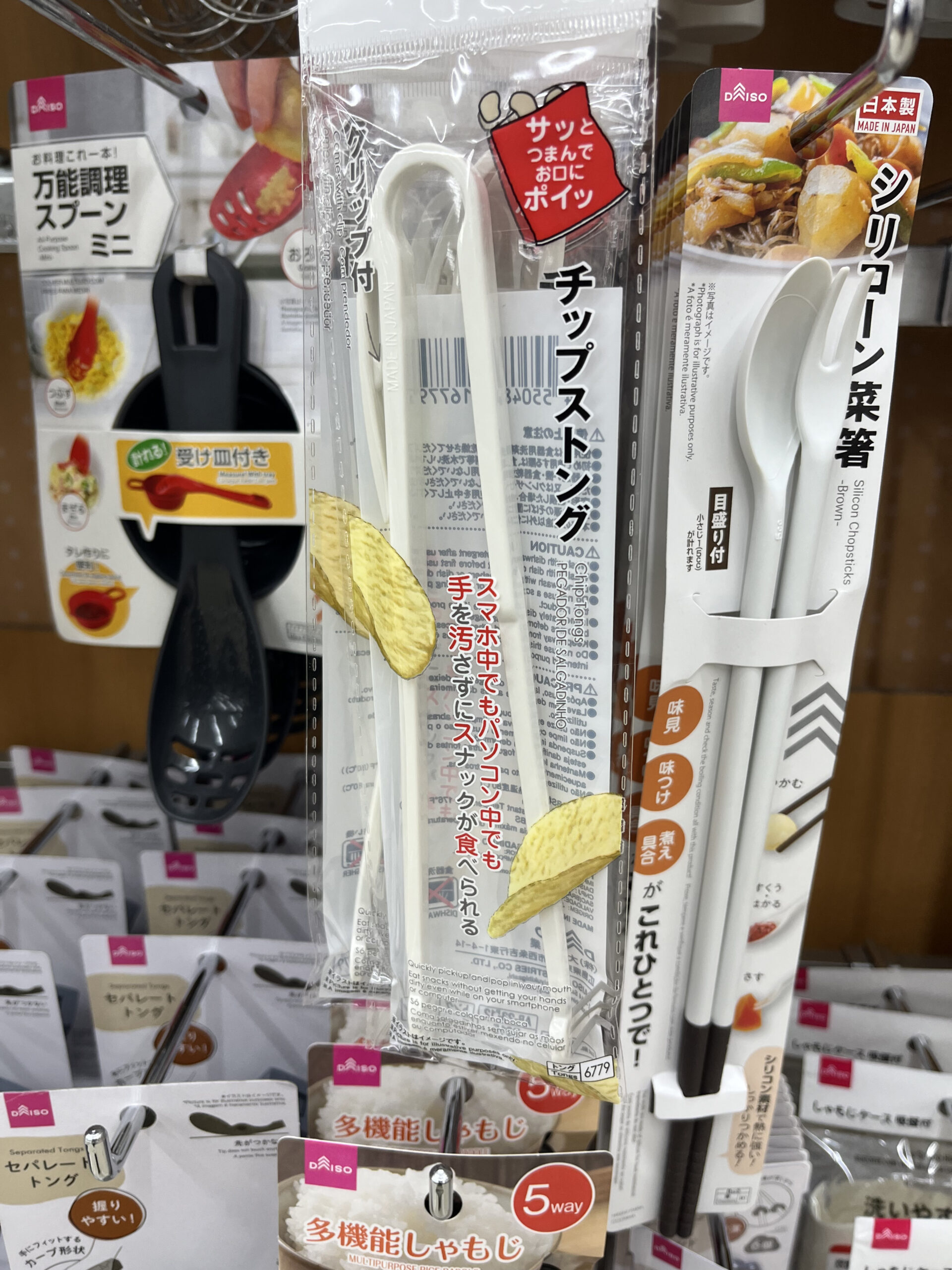
-
Potato chip tongs
If you have ever tried to make potato chips at home, you know what a hassle it can be to get the last chips out of the oil so they do not burn. Here again, Daiso comes to the rescue with a special tool for capturing and lifting your potato chips.
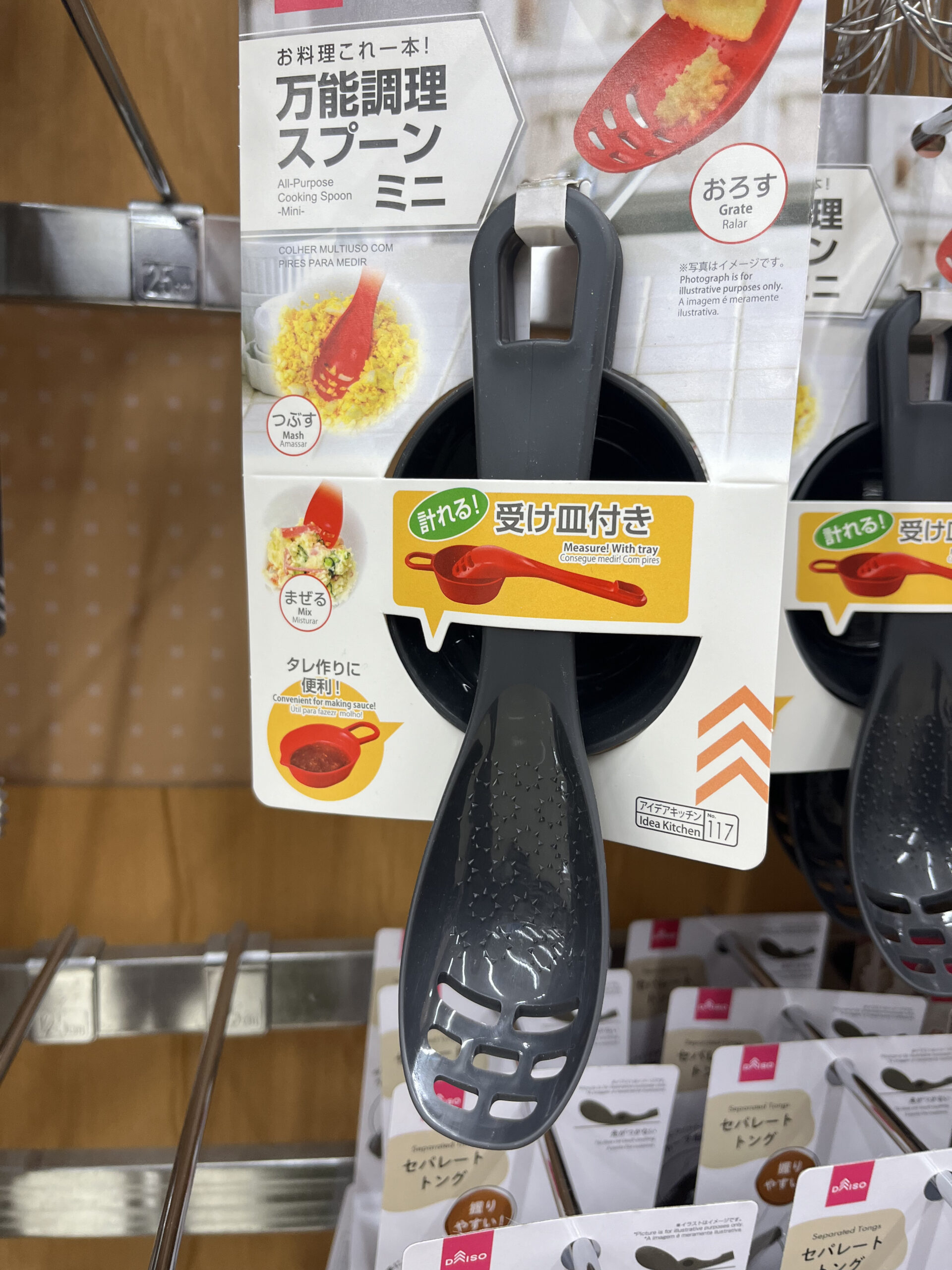
-
Rice mashing spoon
The design lets you press the rice gently, and you can add spices or ingredients like tuna without them clumping up. Especially useful if you are making fried rice from your leftovers.
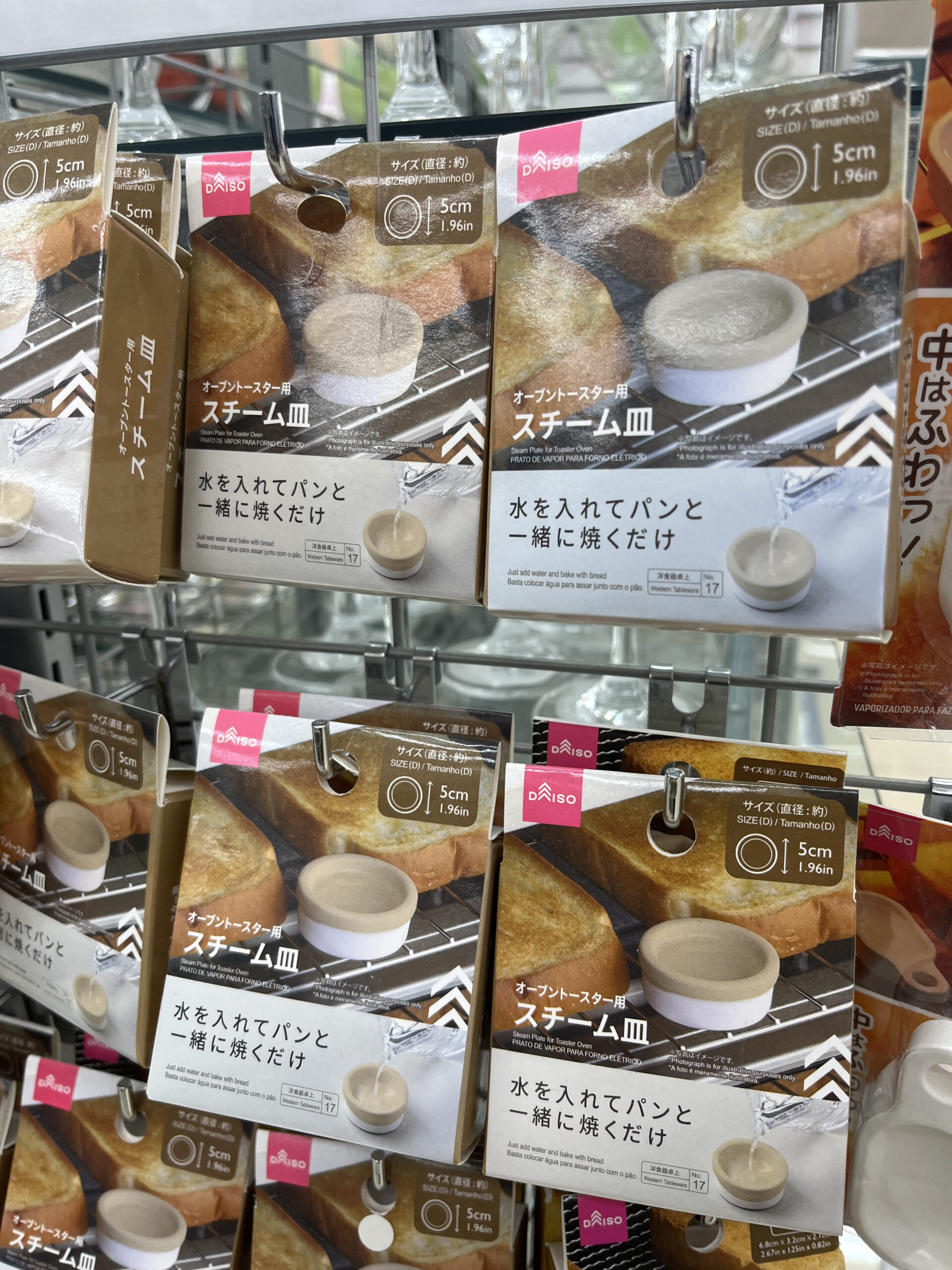
-
Steam cup for the roaster oven
Most Japanese have never seen a stand-up toaster. The standard appliance in Japanese homes is a roaster oven, where you lay the toast (or anything else you want to toast) flat and allow the heat to roast the surface.
But this may mean dry bread or anything else toasted. What if you could add some steam while toasting? Just enough to create a chewy inside which is still crisp on the outside.
Enter the toaster oven steam cup. Just add some water, put it in the toaster oven, and the toasting improves.
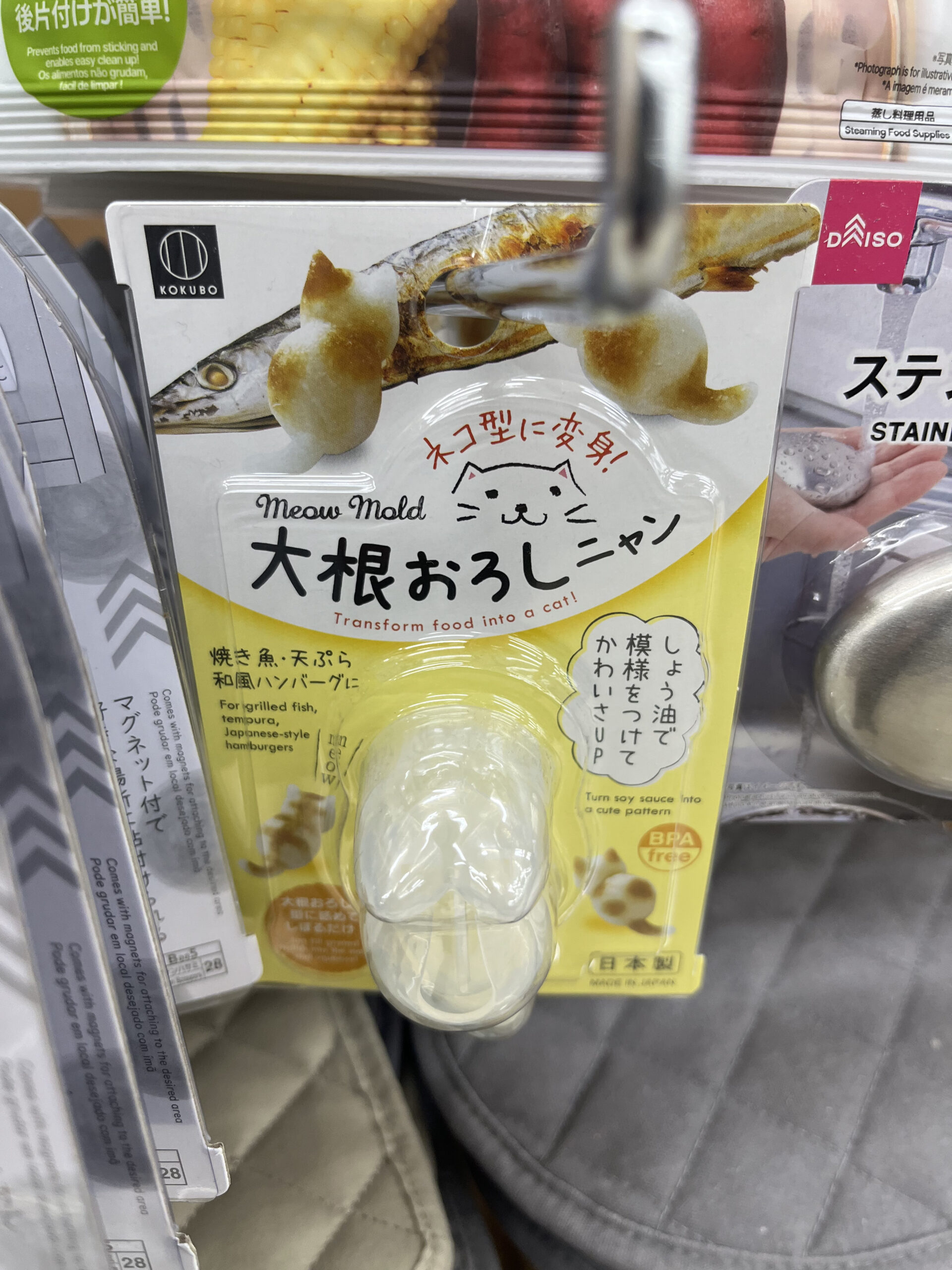
-
Cat-shaped mochi mold
Japanese dry rice cakes, created by beating glutinous rice in a huge wooden mortar (often as an attraction around New Year), are a delicacy served during winter in bean soup, or grilled (in the roaster oven). And that is when you mold it into the shape of a cute cat.
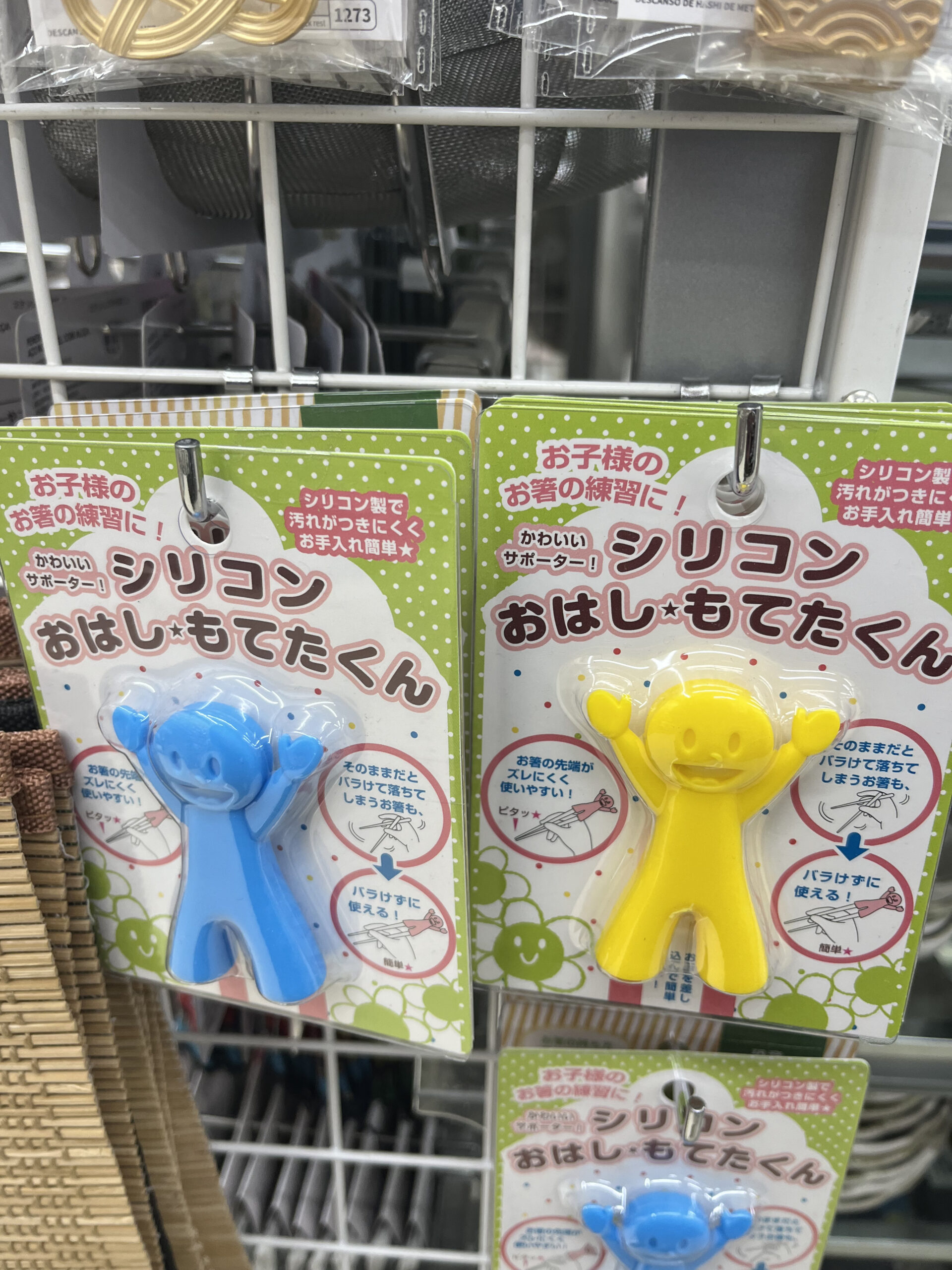
-
Silicon man chopstick stand
Put your chopsticks on something during the meal, so they do not have to touch the table, is good table manners. Using chopstick stands (or more accurately supports). Sometimes elaborate and beautiful, they are more often simple and practical, or whimsy. Like these little guys.
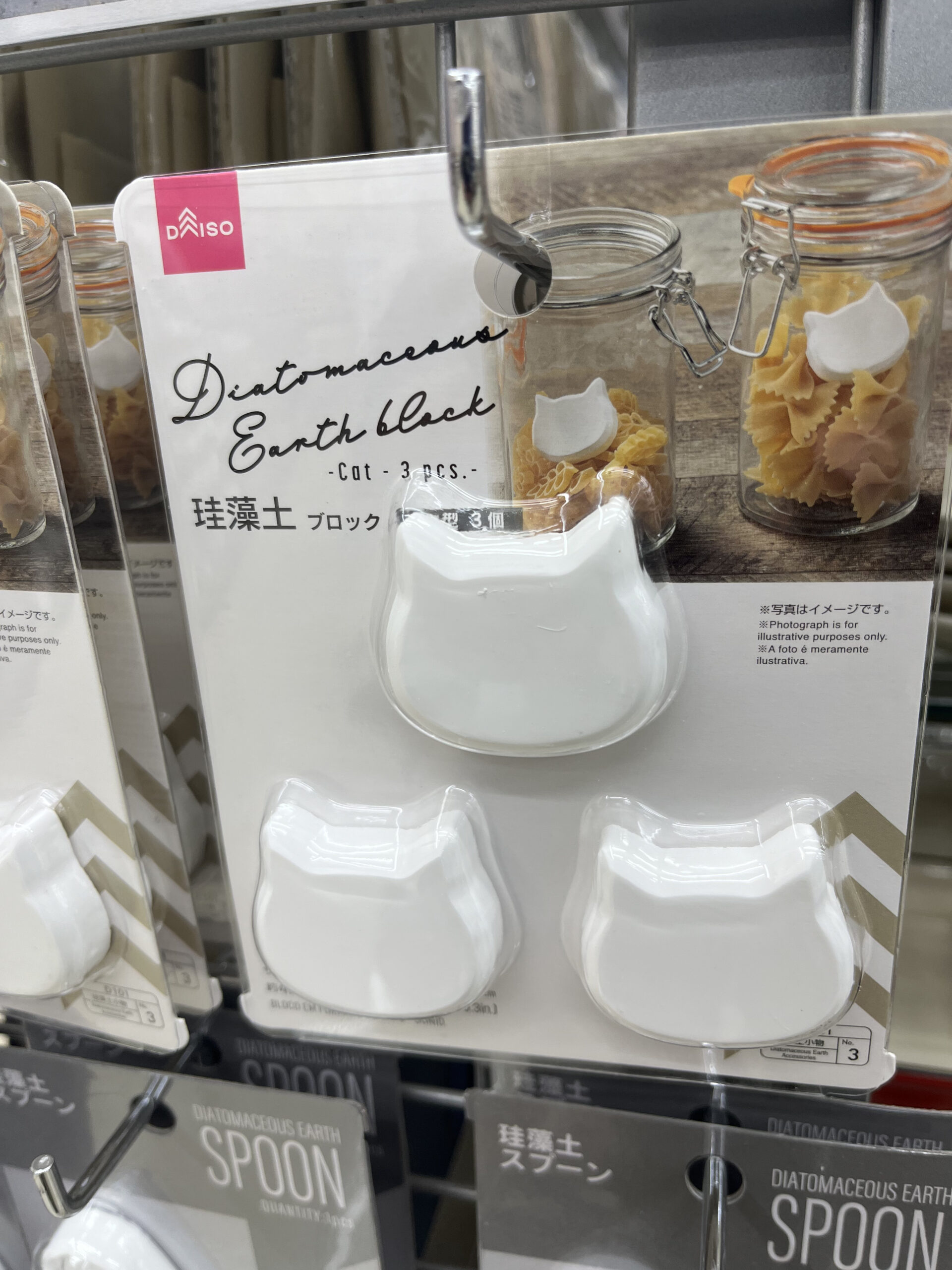
-
Cat-shaped dry goods moisture absorber
There is a general obsession with cats in Japanese culture, which at least comes as much from their being cute as their supposed role as go-betweens to the spirit world. And of course, they earn their keep by catching mice, too.
Or as in the case of these little cats, water molecules. They absorb moisture from the air inside a jar or plastic bag, keeping your dry goods fresh longer. As useful as real-world cats, and almost as cute.
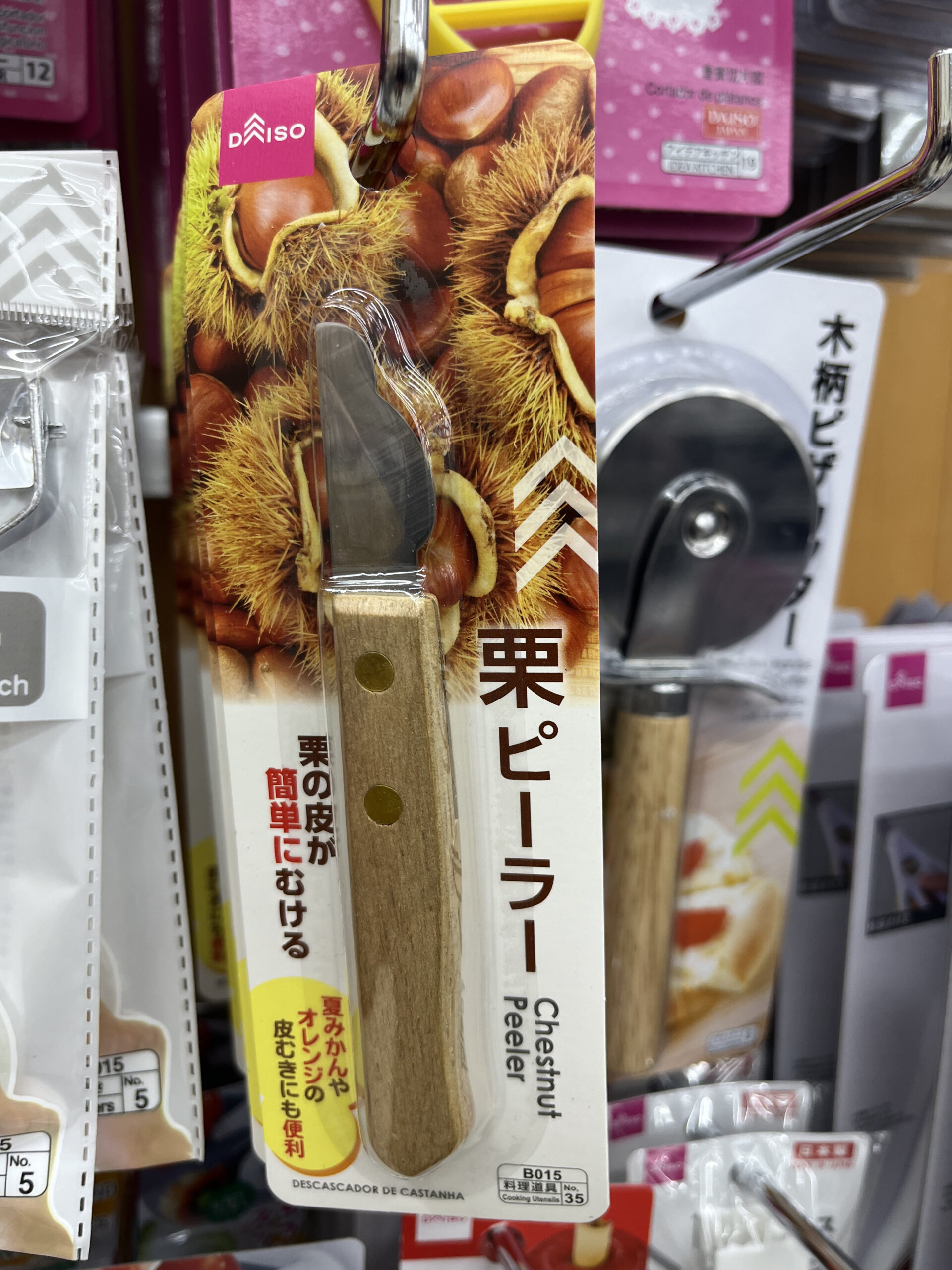
-
Chestnut peeler
If you frequently eat fresh chestnuts, you will appreciate that shelling out 110 yen for a specialized peeler is a good investment. While fresh chestnuts are widely available in fall in Japan, and preserved and consumed as a delicacy throughout the year, this may not be a tool that finds its way into every kitchen. But those who prepare their chestnuts need it.
So there you have it: 10 unbelievably useful – and cheap – kitchen tools to bring home as souvenirs. Buy some for your friends, too.
Related Articles
Japanese Restaurant Etiquette: Simple Mistakes That Can Ruin Your Meal
Warning: Undefined array key "sfsi_threadsIcon_order" in /home/veremosglobal/tokyoroomfinder.com/public_html/blog/wp-content/plugins/ultimate-social-media-icons/libs/controllers/sfsi_frontpopUp.php on line 165
Warning: Undefined array key "sfsi_blueskyIcon_order" in /home/veremosglobal/tokyoroomfinder.com/public_html/blog/wp-content/plugins/ultimate-social-media-icons/libs/controllers/sfsi_frontpopUp.php on line 170
Warning: Undefined array key "sfsi_bluesky_display" in /home/veremosglobal/tokyoroomfinder.com/public_html/blog/wp-content/plugins/ultimate-social-media-icons/libs/controllers/sfsi_frontpopUp.php on line 266


